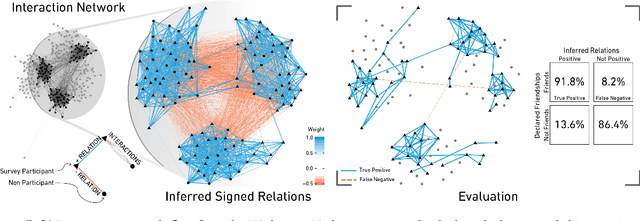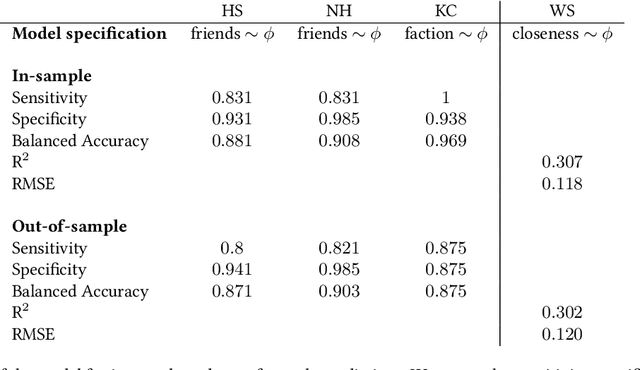Giacomo Vaccario
Reconstructing signed relations from interaction data
Sep 07, 2022



Abstract:Positive and negative relations play an essential role in human behavior and shape the communities we live in. Despite their importance, data about signed relations is rare and commonly gathered through surveys. Interaction data is more abundant, for instance, in the form of proximity or communication data. So far, though, it could not be utilized to detect signed relations. In this paper, we show how the underlying signed relations can be extracted with such data. Employing a statistical network approach, we construct networks of signed relations in four communities. We then show that these relations correspond to the ones reported in surveys. Additionally, the inferred relations allow us to study the homophily of individuals with respect to gender, religious beliefs, and financial backgrounds. We evaluate the importance of triads in the signed network to study group cohesion.
When standard network measures fail to rank journals: A theoretical and empirical analysis
Jun 29, 2021



Abstract:Journal rankings are widely used and are often based on citation data in combination with a network perspective. We argue that some of these network-based rankings can produce misleading results. From a theoretical point of view, we show that the standard network modelling approach of citation data at the journal level (i.e., the projection of paper citations onto journals) introduces fictitious relations among journals. To overcome this problem, we propose a citation path perspective, and empirically show that rankings based on the network and the citation path perspective are very different. Based on our theoretical and empirical analysis, we highlight the limitations of standard network metrics, and propose a method to overcome these limitations and compute journal rankings.
 Add to Chrome
Add to Chrome Add to Firefox
Add to Firefox Add to Edge
Add to Edge